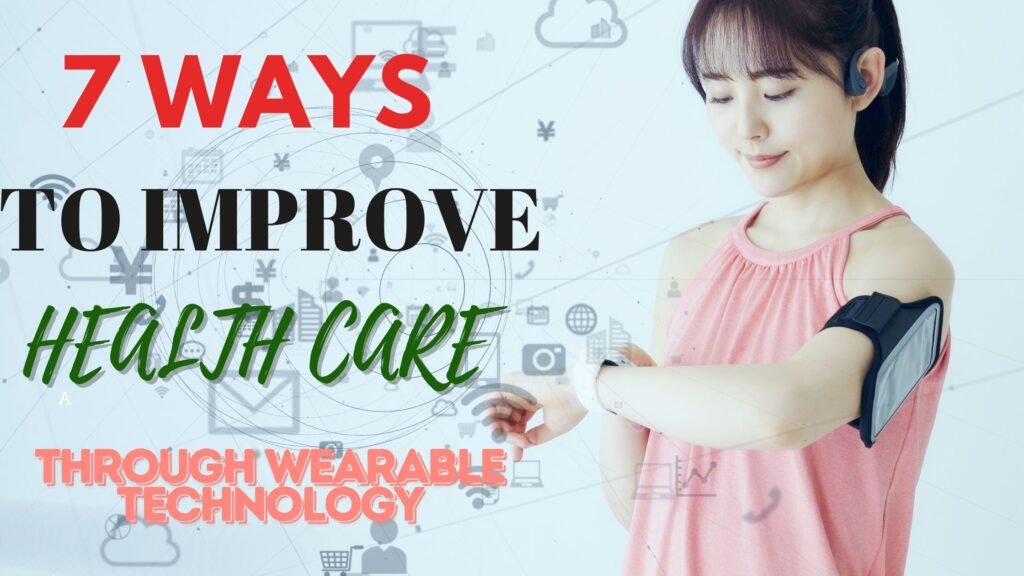Introduction to Digital Health Technology in Diabetic Management
Digital health technology has emerged as a transformative force in the realm of diabetic management.
The convergence of healthcare and technology has paved the way for innovative solutions that cater to the needs of diabetic patients.
Diabetic management, traditionally reliant on manual monitoring and intervention, is now experiencing a significant shift through the integration of advanced digital tools.
Millions of individuals worldwide are affected by this chronic condition.
The increasing incidence calls for more efficient and effective management strategies to enhance patient outcomes and overall quality of life.
Digital health technology offers a promising avenue to address these challenges.
Different advances in diabetic management
From continuous glucose monitors (CGMs) to sophisticated insulin pumps, the landscape of diabetes care is rapidly evolving.
These technologies provide real-time data and analytics, enabling patients to make informed decisions about their health.
New technology for diabetes, such as the insulin implant arm and the insulin chip for diabetes, are changing how patients manage their insulin levels.
These advancements represent a significant leap towards minimizing the burden of daily injections and enhancing convenience.
Furthermore, the integration of mobile applications and cloud-based platforms allows for seamless communication between patients and healthcare teams, fostering a more collaborative approach to diabetic management.
The convenience of digital technologies
The significance of digital health technology extends beyond mere convenience.
It empowers patients with the knowledge and tools needed to take control of their condition.
Through continuous innovation, these technologies are poised to improve adherence to treatment protocols.
This reduce complications, and ultimately transform the landscape of diabetic care.
Role 1: Continuous Glucose Monitoring (CGM) Systems
Continuous Glucose Monitoring (CGM) systems represent a significant advancement in diabetic management.
Traditional blood glucose meters provide a snapshot of glucose levels at a single point in time. On the other hand CGM devices offer real-time, continuous monitoring of glucose concentrations.

CGM systems measure the interstitial glucose levels every few minutes through a small sensor inserted under the skin.
This data is then transmitted to a receiver or a compatible smart device, allowing users to monitor their glucose levels throughout the day and night.
One of the primary benefits of CGM systems is the ability to observe glucose trends and patterns, which can lead to more informed decision-making.
Especially regarding diet, exercise, and insulin therapy.
CGM offers a comprehensive picture of glucose fluctuations, helping individuals with diabetes to identify and respond to hypoglycemia or hyperglycemia more promptly.
This continuous data stream can significantly enhance glycemic control and reduce the risk of long-term complications associated with diabetes.
Advancement in diabetic management with CGM Systems
Recent advancements in CGM technology have further improved their accuracy, ease of use, and integration with other digital health technologies.
For instance, some modern CGM systems have predictive alerts, which warn users of impending glucose level changes before they occur.
This proactive approach allows for timely interventions, potentially preventing severe glycemic events.
Additionally, the advent of smartphone apps and cloud-based platforms enables users to share their glucose data with healthcare providers.
This allows for more personalized and effective diabetic management strategies.
Moreover, the integration of CGM systems with insulin pumps and other automated insulin delivery devices is paving the way for fully closed-loop systems.
This is often referred to as artificial pancreatic technology.
These systems automatically adjust insulin delivery based on real-time glucose readings, offering a more hands-off and precise approach to diabetes management.
As digital health technology continues to evolve, CGM systems will play an increasingly central role in transforming how diabetes is managed.
Role 2: Smart Insulin Pumps
Smart insulin pumps represent a significant advancement in diabetes therapy
It offers a more efficient and precise method for insulin delivery.
These devices automate insulin administration, closely mimicking the body’s natural insulin release.
By integrating with Continuous Glucose Monitoring (CGM) systems, smart insulin pumps can adjust insulin delivery in real-time based on current blood glucose levels.
This integration helps to maintain optimal glucose control, reducing the risk of hyperglycemia and hypoglycemia.
One of the standout features of smart insulin pumps is their ability to deliver insulin in a more precise manner.
Unlike traditional insulin therapy, which often requires multiple daily injections, these pumps provide a continuous subcutaneous insulin infusion.
This method allows for better fine-tuning of insulin dosages, thereby improving overall glucose management and enhancing the quality of life for individuals with diabetes.
Looking ahead, the new insulin pumps slated for release in 2024 are expected to push the boundaries of diabetic management even further.
These next-generation devices are anticipated to offer enhanced connectivity features, allowing for seamless integration with digital health technology platforms.
Such advancements will enable users to monitor and manage their diabetes more effectively through mobile apps and other digital interfaces.
Advanced smart insulin pumps for diabetes management
Furthermore, the upcoming models are likely to incorporate advanced algorithms that can predict blood glucose trends and adjust insulin delivery proactively.
This predictive capability can significantly enhance the precision of insulin therapy, reducing the burden on users to manually adjust their insulin settings.
The integration of these advanced features in new insulin pumps underscores the transformative potential of digital health technology in diabetes care.
Overall, smart insulin pumps are a critical component of modern diabetes management, offering improved precision, convenience, and integration with digital health technology.
As these devices continue to evolve, they promise to offer even greater benefits to individuals managing diabetes, paving the way for more effective and personalized care solutions.
Role 3: Mobile Health Applications
The advent of mobile health applications has significantly transformed diabetic management, offering a versatile toolkit for both patients and healthcare providers.
These applications serve various functions, from tracking blood sugar levels to managing diet, exercise, and medication schedules, thereby playing a critical role in comprehensive diabetic care.
One of the primary features of these mobile apps is their ability to monitor blood glucose levels.
Users can log their readings, which allows for a detailed historical view and trend analysis.
OTHER INTERESTING BLOG POST
This data can be shared with healthcare providers, facilitating remote monitoring and timely interventions.
Additionally, many apps offer personalized feedback based on the logged data, helping users make informed decisions about their lifestyle and treatment plans.
Diet and exercise management are also integral components of these mobile health applications.
Apps designed for diet tracking enable users to log their food intake, monitor carbohydrate consumption, and receive dietary recommendations tailored to their specific needs.
Exercise tracking features allow users to record their physical activities, set fitness goals, and monitor their progress.
Together, these functionalities help in maintaining a balanced lifestyle, which is crucial for effective diabetic management.
Medication adherence apps in Diabetic Management
Medication adherence is another critical area where mobile health applications prove beneficial.
With features like medication reminders and dosage tracking, these apps ensure that patients adhere to their prescribed treatment regimens.
Some advanced applications even provide drug interaction warnings, adding an extra layer of safety for users.
Moreover, these applications significantly enhance patient engagement.
By offering educational resources, interactive platforms, and real-time feedback, they empower patients to take an active role in their health management.
This heightened engagement can lead to better health outcomes and improved quality of life for individuals living with diabetes.
In summary, mobile health applications have transformed diabetic management through their multifaceted functionalities.
By enabling remote monitoring, offering personalized feedback, and enhancing patient engagement, these digital tools are indispensable in the modern healthcare landscape.
Role 4: Telemedicine and Remote Monitoring
Telemedicine and remote monitoring technologies have transformed diabetic management, offering significant advantages for both patients and healthcare providers.
These technologies facilitate the provision of medical services from the comfort of patients’ homes.
This thereby minimizes the necessity for frequent in-person clinic visits.
By leveraging telemedicine, patients can consult with endocrinologists and diabetes specialists through virtual appointments.
This ensures that they receive timely and efficient care without the logistical challenges associated with traditional healthcare settings.
Remote monitoring plays a crucial role in the continuous management of diabetes.
Through the use of digital health technology, such as wearable devices and mobile health applications, patients can track essential health metrics.
Metrics like blood glucose levels, physical activity, and dietary habits in real-time.
These data points are then transmitted to healthcare professionals, allowing for ongoing supervision and timely interventions when necessary.
For instance, new insulin pumps and continuous glucose monitoring systems (CGMs) can provide real-time alerts to both patients and their healthcare teams.
This enables prompt adjustments to treatment plans and preventing potential complications.
Telemedicine advantages in Diabetic management
The benefits of telemedicine and remote monitoring extend beyond convenience and immediate access to care. They also contribute to improved patient outcomes through personalized and proactive management strategies.
By continuously monitoring health data, healthcare providers can identify trends and patterns that may indicate the need for changes in therapy, dietary adjustments, or lifestyle modifications.
This level of continuous support and real-time feedback helps patients maintain better glycemic control and reduces the risk of long-term complications associated with diabetes.
Moreover, the integration of telemedicine and remote monitoring into diabetic management fosters a collaborative approach to care.
Patients become more engaged and empowered in managing their condition as they have greater access to educational resources and support networks through digital platforms.
This holistic approach not only enhances patient adherence to treatment plans but also promotes a higher quality of life for individuals living with diabetes.
Role 5: Artificial Intelligence and Machine Learning
Artificial intelligence (AI) and machine learning (ML) are changing diabetic management by offering advanced predictive capabilities and personalized treatment options.
By analyzing extensive datasets, AI and ML algorithms can identify patterns and make accurate predictions about blood sugar fluctuations.
This predictive power enables healthcare providers to anticipate and mitigate potential complications, thereby improving patient outcomes.
One of the notable advantages of AI and ML in diabetic management is their ability to optimize treatment plans.
These technologies can continuously learn from patient data, adjusting insulin dosages and other treatments in real-time.
For instance, AI-driven platforms can integrate data from continuous glucose monitors (CGMs) and insulin pumps to provide tailored insulin delivery. This level of customization ensures that each patient receives the most effective treatment, reducing the risk of hypo- and hyperglycemia.
Moreover, AI and ML can offer personalized recommendations that empower patients to manage their condition more effectively.
AI powered mobile applications and diabetic managment
For example, AI-powered mobile applications can analyze a patient’s lifestyle data, including diet, physical activity, and sleep patterns, to provide actionable insights.
These apps can suggest dietary adjustments, exercise routines, and other lifestyle changes that can help maintain optimal blood sugar levels.
Several AI-driven tools and platforms are already making a significant impact in the field.
Companies like Medtronic and IBM Watson Health are developing AI-enabled solutions to enhance diabetic care.
Medtronic’s Guardian Connect system, for example, uses AI to predict glucose levels up to an hour in advance, allowing patients to take proactive measures.
Similarly, IBM Watson Health’s AI algorithms assist clinicians in developing more effective treatment plans based on comprehensive data analysis.
In conclusion, AI and ML are playing a pivotal role in transforming diabetic management. By leveraging these technologies, healthcare providers can offer more precise, personalized, and proactive care, ultimately improving the quality of life for diabetic patients.
Role 6: Implantable Insulin Devices
Recent advancements in digital health technology have paved the way for innovative solutions in diabetic management, notably implantable insulin devices.
These devices, which include insulin implants and implantable insulin pumps, signify a substantial leap from traditional insulin delivery methods, promising enhanced glucose control and improved patient adherence.
Implantable insulin devices work by continuously delivering insulin directly into the bloodstream, mimicking the body’s natural insulin secretion. This method provides a more consistent and controlled release of insulin compared to subcutaneous injections or external pumps.
For example, an insulin implant arm device is inserted beneath the skin, where it can remain for several months, reducing the need for frequent injections and minimizing the risk of infection or discomfort.
One of the primary benefits of these devices is their ability to significantly improve patient compliance. Traditional insulin delivery methods often require multiple daily injections, which can be burdensome and lead to non-adherence.
Advantages of implantable insulin devices
In contrast, implantable insulin pumps offer a set-it-and-forget-it convenience, ensuring that patients receive the necessary insulin dosage without constant intervention. This convenience can lead to better glucose control and a reduction in diabetes-related complications.
Furthermore, the development of an insulin chip for diabetes is a promising area of research. These chips can be programmed to release insulin in response to blood glucose levels, providing a highly personalized and responsive approach to diabetic management.
Such advancements are not only groundbreaking but also crucial in managing diabetes more effectively.
As of now, the pricing and availability of these advanced devices vary.
Some implantable insulin devices are already available on the market, while others are expected to be released in 2024.
The cost of these devices can be higher than traditional methods, but the long-term benefits in terms of improved health outcomes and quality of life may justify the investment for many patients.
In conclusion, the advent of implantable insulin devices represents a significant milestone in the realm of diabetic management. By offering more consistent insulin delivery and improving patient adherence, these devices hold the potential to transform the daily lives of those living with diabetes.
Future Directions
In recent years, digital health technology has emerged as a pivotal force in transforming diabetic management.
From continuous glucose monitoring (CGM) systems and mobile health applications to new insulin pumps and insulin implant arms, advancements in technology are enhancing the lives of individuals managing diabetes.
These innovations provide more accurate data, enable real-time monitoring, and offer personalized treatment plans, thus improving both clinical outcomes and quality of life.
Several key points underscore the significance of digital health technology in diabetic care. First, the integration of CGMs with mobile health apps allows for seamless tracking of glucose levels, empowering patients with actionable insights.
Second, new insulin pumps and the development of insulin chips for diabetes are transforming how insulin is administered, offering more precise and less invasive options.
Third, telemedicine has emerged as a vital tool, enabling remote consultations and continuous patient support, which is particularly beneficial in managing chronic conditions like diabetes.
Looking ahead, the future of diabetic management appears promising with ongoing research and development. Emerging technologies such as artificial intelligence and machine learning are expected to play a crucial role in predicting glucose level fluctuations and customizing treatment plans.
Additionally, advancements in biosensor technology could lead to the creation of even more sophisticated CGMs and insulin delivery systems. The concept of an insulin implant chip, which could potentially automate and regulate insulin release, represents another exciting frontier.
Conclusion
For individuals living with diabetes, staying informed about these technological advancements is crucial. Embracing digital health solutions can lead to more efficient and effective management of their condition.
Healthcare professionals, too, must continue to advocate for the integration of these technologies into everyday practice, ensuring that patients receive the full benefits of these innovations.
In conclusion, the transformative potential of digital health technology in diabetes management cannot be overstated.
As we move forward, continuous innovation and proactive adoption of these tools will be essential in achieving better health outcomes and enhancing the overall well-being of those affected by diabetes.
Remember to follow me on pinterest for more digital health information.







